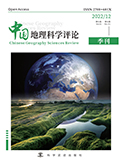参考文献
[1] Allender S, Foster C, Hutchinson L, et al. Quantification of urbanization in relation to chronic diseases in developing countries: A systematic review[J]. Journal of Urban Health, 2008, 85(6): 938-951.

